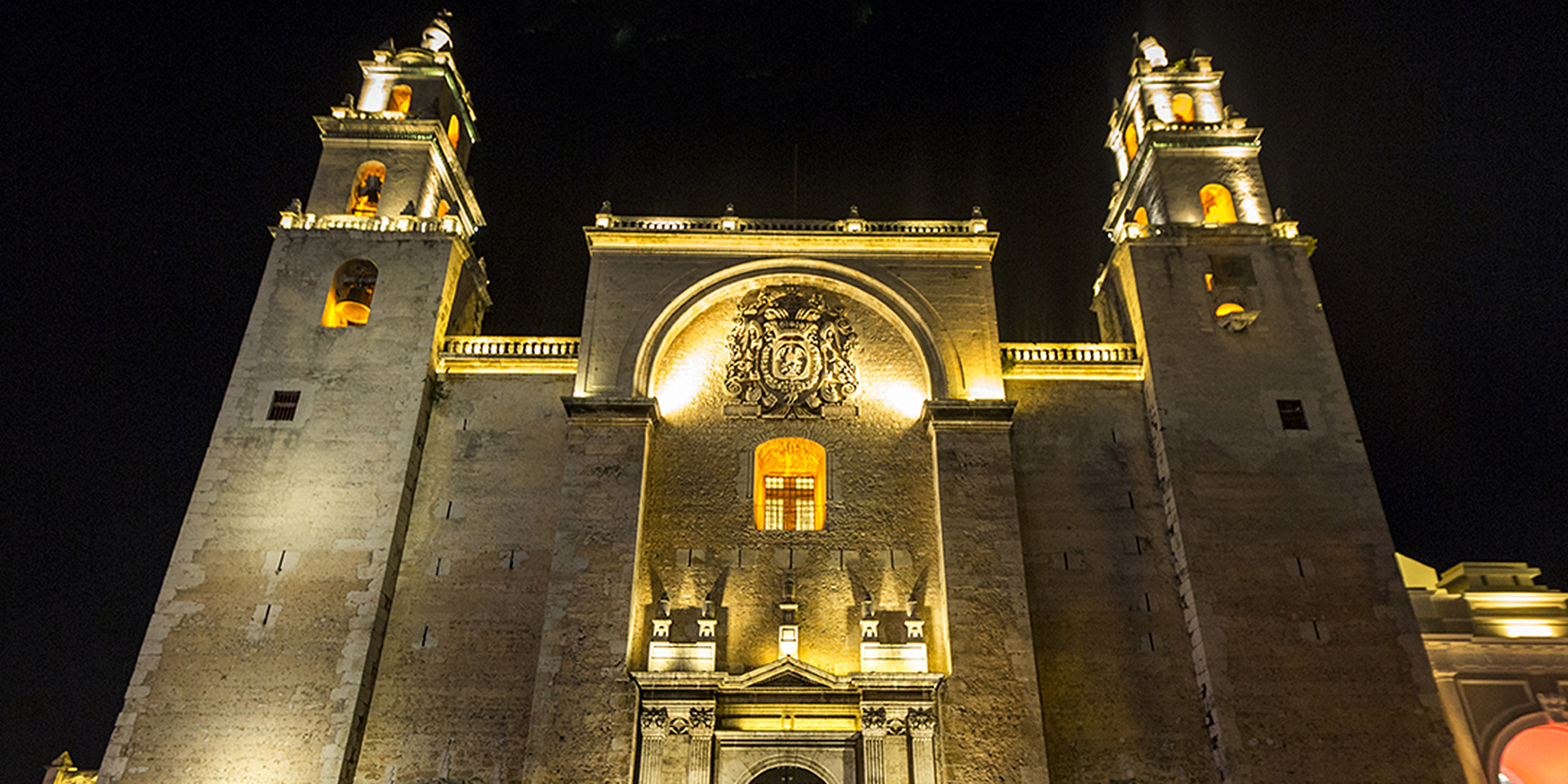The Cathedral of Yucatan is dedicated to San Ildefonso, and it is the seat of the Archdiocese of Yucatan, the first cathedral built on the continental America (mainland) and also the oldest in Mexico.
Only the Cathedral of Santo Domingo in all of America is older than the Yucatan Cathedral. Once the Spanish city was built over the ancient T’Hó, the conquerors set out to build the cathedral church. The work was built between 1562 and 1599, after the authorization of Pope Pius IV, and at the request of King Felipe II, the church in the capital of Yucatan was erected as a cathedral.
The construction works of the enclosure were entrusted to Pedro de Aleustia, and completed by Juan Miguel de Agüero. During the 19th century, some of the treasures and works of art were stolen due to looting and political instability suffered by the city during this period.

In 1915, by orders of General Salvador Alvarado, the Cathedral was looted, losing its invaluable collection of sacred art, including Baroque and Churrigueresque altarpieces dating back to the 17th and 18th centuries, the Cathedral Treasure, and the Walcker organ, made in Germany, which had just been built in 1902.
In 1916, the Chapel of San José and the Chapel of the Rosary were demolished to separate the cathedral from the Episcopal Palace (now the Museum of Contemporary Art), leaving what is now a pedestrian walkway called “Pasaje de la Revolución”, which had arches at both ends and a roof made of metal frames and glass, which was later removed due to deterioration. The arches were demolished, and many years later, in 2011, they were restored to their original form.

The cathedral has three naves, a central one and two lateral ones. It has three chapels and the sacristy. Originally, it had five chapels, but they were demolished. It has two towers of two bodies that have a Moorish style. It has a dome adorned with buttresses.
The facade is of great sobriety, with a Renaissance-style, and the door of forgiveness stands out with a semicircular arch framed by columns on both sides. Between the columns, there are two images of St. Peter and St. Paul. Above the main access arch is a cornice with a triangular pediment. Above it, there is a window that corresponds to what is now the choir, and above it, there is the stone coat of arms of the Spanish monarchy.
All of the above is framed by two enormous columns of the Tuscan order, which support a huge arch in the manner of a pediment. The atrial cross, which was used to measure the distances from various towns in the region to the capital, Merida, is located here. The central vaults of the nave have coffered shapes, while the lateral ones are of Gothic latticework. The interior is also austere, although it presents some Baroque altarpieces. In the main altar, there is a large image of the Crucified Christ, known as the “Christ of Unity,” considered the largest wooden crucifix under a roof, a work of the Spanish artist Lapayese del Río, and was made to replace the destroyed altarpiece during the movements of 1915. The image of the Christ known as “El Cristo de las Ampollas” is highly revered in this cathedral, as well as the image of “Santa Eulalia,” a gift from Spanish Merida to Yucatecan Merida in the mid-1960s.
TYT Newsroom



